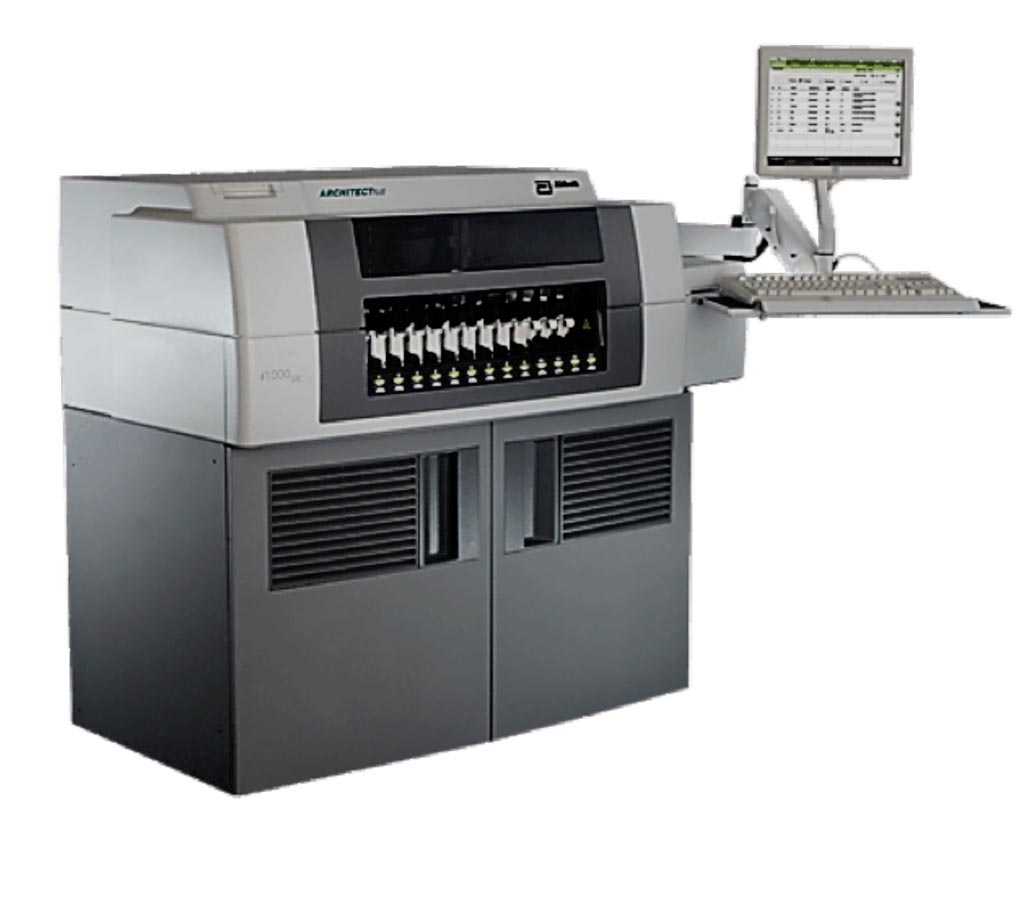Troponin I Levels Predict Coronary Artery Disease Severity
By LabMedica International staff writers
Posted on 20 Mar 2018
Although coronary artery disease (CAD) may be present early in life, its progression over time is highly unpredictable. Coronary atherosclerosis can progress at variable rates, ranging from a gradual increase in luminal narrowing to an abrupt progression to total luminal occlusion.Posted on 20 Mar 2018
Total luminal occlusion is often a result of disruption of a vulnerable non-stenotic plaque attributable to rupture or erosion and subsequent thrombosis. Consequently, CAD progression may be silent and gradual or sudden and catastrophic, leading to acute coronary syndrome or death.

Image: The ARCHITECT i1000SR immunoassay analyzer used to measure high‐sensitivity troponin I (Photo courtesy of Abbott Laboratories).
Medical scientists at Emory University School of Medicine (Atlanta, GA, USA) studied 3,087 patients (aged 63±12 years, 64% men) undergoing cardiac catheterization without evidence of acute myocardial infarction, the severity of CAD was calculated by the number of major coronary arteries with ≥50% stenosis and the Gensini score. CAD progression was assessed in a subset of 717 patients who had undergone ≥2 coronary angiograms more than three months before enrollment.
Fasting arterial blood samples were collected at cardiac catheterization and stored at −80 °C. High‐sensitivity troponin I (hsTnI) was measured using the Abbott ARCHITECT analyzer, which has a limit of detection of 1.2 pg/mL and an interassay coefficient of variation of <10% at 4.7 pg/mL. Serum high‐sensitivity C‐reactive protein (hs‐CRP) levels were determined in 2,127 patients using a particle‐enhanced immunoturbidimetric assay that has a lower limit of detection of 0.03 mg/L.
The scientists reported that high‐sensitivity troponin I (hsTnI) levels were detected in almost all patients (99.9%) and were lowest in subjects without significant native CAD (median, 3.3 pg/mL; interquartile range [IQR], 2.2–6 pg/mL) compared with those with 1‐vessel CAD (median, 4.3 pg/mL; IQR, 2.7–7.7 pg/mL), 2‐vessel CAD (median, 5.1 pg/mL; IQR, 3–8.6 pg/mL), or 3‐vessel CAD (median, 5.7 pg/mL; IQR, 3.4–9.8 pg/mL). The hsTnI level was also a significant predictor of incident death, cardiovascular death, myocardial infarction, revascularization, and cardiac hospitalizations, independent of the covariates and CAD severity.
The authors concluded that an elevated hsTnI level is closely associated with more severe CAD, with its accelerated progression, and with incident adverse cardiovascular events, independent of other clinical risk factors and hs‐CRP levels. This study provides additional support for the potential role of hsTnI as a marker of the presence, progression, and outcomes in CAD. The study was published on March 6, 2018, in the Journal of the American Heart Association.
Related Links:
Emory University School of Medicine













